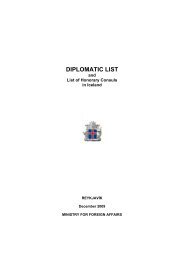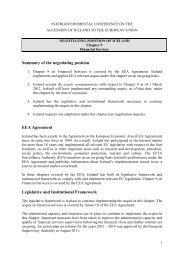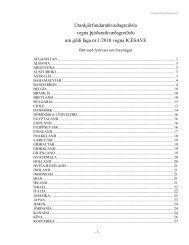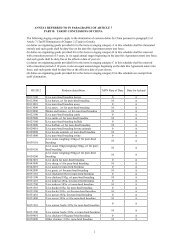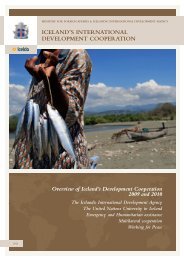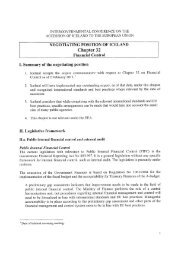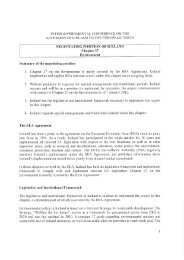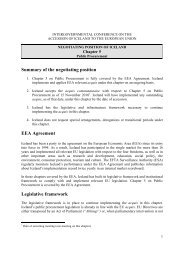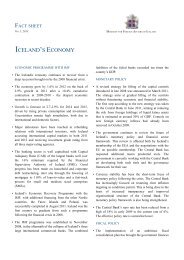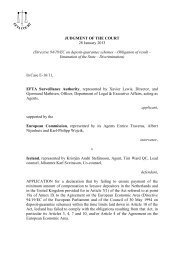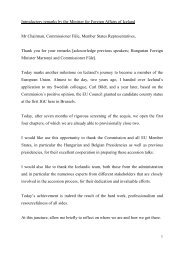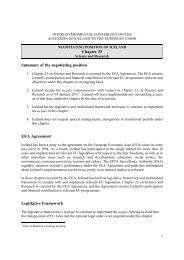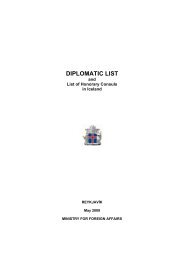Icesave Key Figures - Fact sheet
Icesave Key Figures - Fact sheet
Icesave Key Figures - Fact sheet
Create successful ePaper yourself
Turn your PDF publications into a flip-book with our unique Google optimized e-Paper software.
In the Netherlands, there were 114,000<br />
individual <strong>Icesave</strong> accounts (retail depositors)<br />
and 28 wholesale depositors, amounting to a<br />
total of €1.67 billion. Around 90,000 of the<br />
accounts had less than €20,887.<br />
The amount covered by minimum guarantees<br />
was €1.33 billion. Dutch authorities decided<br />
to pay up to €100,000 for each <strong>Icesave</strong> retail<br />
depositor. There were 469 retail depositors<br />
that had more than €100,000 in their <strong>Icesave</strong><br />
accounts and the total amount not covered<br />
was around €40 million.<br />
On 19 November 2008, the IMF approved<br />
Iceland’s request for a Stand-by<br />
Arrangement.<br />
Loans related to the IMF program:<br />
• IMF: $2.1 billion.<br />
• Nordic countries: $2.5 billion.<br />
• Poland: $200 million.<br />
• The Faeroe Islands: $50 million.<br />
• Total funding: approximately $4.75 billion.<br />
The IMF completed the second review of<br />
Iceland’s economic performance under the<br />
program on 16 April 2010.<br />
Iceland, with a population of around 317,000, is a constitutional republic with a parliamentary government. Founded in 1944, Iceland<br />
joined the United Nations in 1946, became a founding member of the OECD in 1948, of NATO in 1949 and joined EFTA in<br />
1970. With Iceland´s accession to the European Economic Area in 1994, Iceland gained access to EU´s internal market. The<br />
foundations of the Icelandic economy, with a GDP of $11.4 billion (IMF 2009 est.) are fisheries, industry, tourism, pharmaceuticals<br />
and services.



